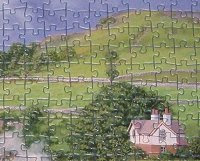
Over the last few weeks I've been reading 'Biblical Church' by Beresford Job who lives north-east of London and meets with the Chigwell Christian Fellowship. And what a fascinating read!
The book is well argued and provides plenty of references both to Bible passages and to well known and respected theologians and Biblical commentators. Job uses this as a technique again and again, pointing out that his conclusions about the meaning of Bible texts and Koine Greek words and constructions are in agreement with expert opinion. Job is claiming nothing new, but he is stoutly proclaiming that as believers we are duty bound to put into practice whatever we see in the New Testament concerning church meetings and governance.
He makes it clear that this means meeting in homes not specially constructed buildings, having small meetings as the norm (tens rather than hundreds or thousands), and the absence of any kind of hierarchical structure. He further points out that it's normal for a local body of believers to eat together as well as worship together, and that meetings are not supposed to be a 'service' led from the front, but instead are an expression of community involving everyone in an active, not passive way.
On the whole, this book complements Frank Viola and George Barna's best-seller, 'Pagan Christianity'. The Viola/Barna book explains how the Church came off the rails in the first place, and also describes the changes necessary to get us back on track. Job's work takes the revised, corrected 'version' of local church and fleshes it out with recommendations on how to get from A to B, what difficulties are likely to be encountered, and how to avoid the major pitfalls. 'Pagan Christianity' could be seen as a theoretical analysis, 'Biblical Church' as a practical handbook (although there is plenty of overlap).
There is one area where my understanding differs from Job's, and that concerns the place of women in church life. But as Job himself says, there will always be differences of understanding and differences of emphasis in the Church, but the truly important thing is that we can (and must) love one another through differences of this kind. We must extend to one another the right to be different.
My advice? Read both these excellent books!







